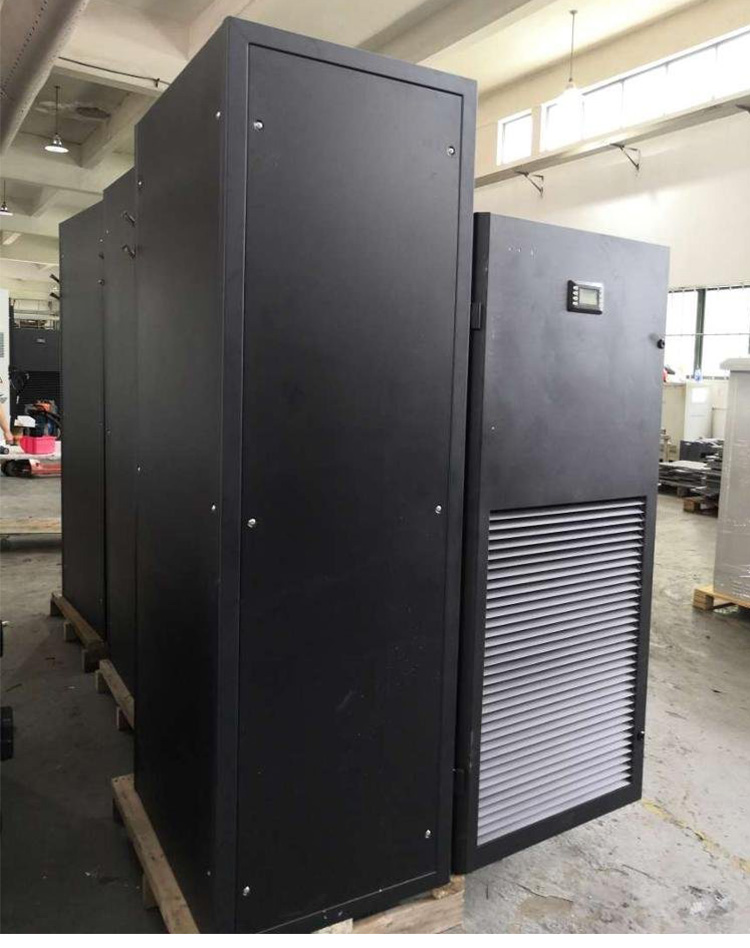
Network cabinets are essential for maintaining a structured and efficient network environment in data centers, server rooms, and telecommunications facilities.SKYT® is a manufacturer specializing in the production and supply of industrial electrical cabinets
Network cabinets, also referred to as a network rack or server rack, is an essential infrastructure component used to house and manage a wide array of networking equipment, servers, and associated devices. Its primary purpose is to provide a secure and organized environment for these critical components while offering features that enhance their functionality and longevity.
Network cabinets come in various sizes and form factors to accommodate the diverse needs of different environments. The most prevalent size for network cabinets is 19 inches in width, and their height is measured in rack units (U). The height can range from a single unit (1U) to as high as 48U or more, with each rack unit measuring approximately 1.75 inches (44.45 mm). The construction of network cabinets is typically robust, utilizing materials such as steel or aluminum to ensure durability and structural integrity.
The design of network cabinets incorporates front and rear doors, which are often equipped with perforations or ventilation features. These elements serve multiple purposes, including allowing airflow to facilitate proper cooling, preventing the buildup of heat, and protecting the housed equipment from physical damage. Additionally, many cabinets feature removable side panels, simplifying access to the internal components for maintenance and installation tasks.
One of the fundamental aspects of network cabinets is the presence of mounting rails within its interior. These vertical rails adhere to standardized spacing and hole patterns, usually following the EIA-310 standard, ensuring compatibility with a wide range of networking and server devices. By using these mounting rails, administrators can easily install, adjust, and organize their equipment, promoting efficient space utilization and facilitating effective cable management.

Cable management is a critical consideration in network cabinets, as it directly impacts the organization, accessibility, and maintenance of the network infrastructure. To address this, cabinets offer a variety of cable management options, including cable trays, loops, and hooks. These features enable administrators to route and secure cables, minimizing tangling and preventing accidental disconnections. An orderly cable management system not only enhances the aesthetics of the cabinet but also facilitates proper airflow, reducing the risk of overheating and improving overall network performance.
Proper cooling and ventilation mechanisms are integral components of network cabinets. To dissipate heat generated by networking equipment and maintain optimal operating temperatures, cabinets often incorporate various cooling features. This can include strategically placed fans, perforated doors, air vents, or even integrated cooling systems such as air conditioners or rack-mounted cooling units. Efficient cooling not only prevents hardware malfunctions but also extends the lifespan of the enclosed devices.
Security is of utmost importance in network cabinets, considering the sensitive and valuable nature of the equipment they house. Cabinets often include lockable doors and side panels to safeguard against unauthorized access, theft, or tampering. Some advanced cabinets even offer additional security measures, such as biometric access control systems or electronic locks, providing an extra layer of protection for mission-critical infrastructure.
To streamline power management, network cabinets frequently incorporate power distribution units (PDUs). These PDUs distribute electrical power to the equipment within the cabinet, often including features like surge protection, power monitoring capabilities, and remote power control. The integration of PDUs simplifies power provisioning, minimizes cable clutter, and enhances the overall safety and efficiency of the network infrastructure.
Network cabinets find extensive use in environments such as data centers, server rooms, and telecommunications facilities. They play a pivotal role in creating an organized and optimized space for networking equipment, promoting efficient maintenance, troubleshooting, and scalability. By ensuring the physical integrity, security, and operational performance of critical network components, network cabinets are vital tools in modern networking infrastructure.
SKYT® factory direct selling independent cabinet, cabinet rack, shell cabinet. Supports customization of multiple models of products, and can be negotiated. Adopting high-grade protective materials, dustproof, rainproof, and corrosion-resistant. Welcome new and old customers to consult.